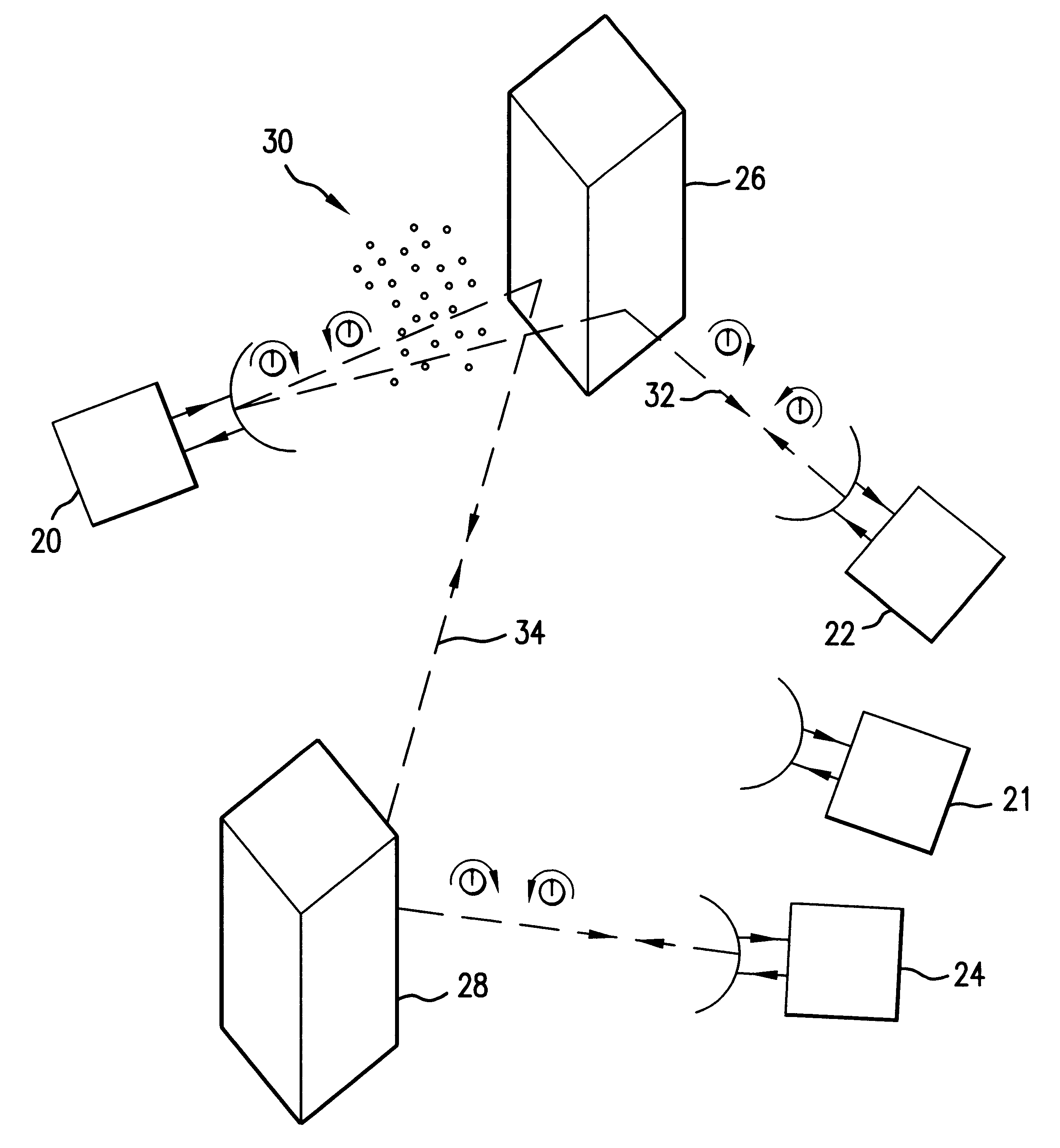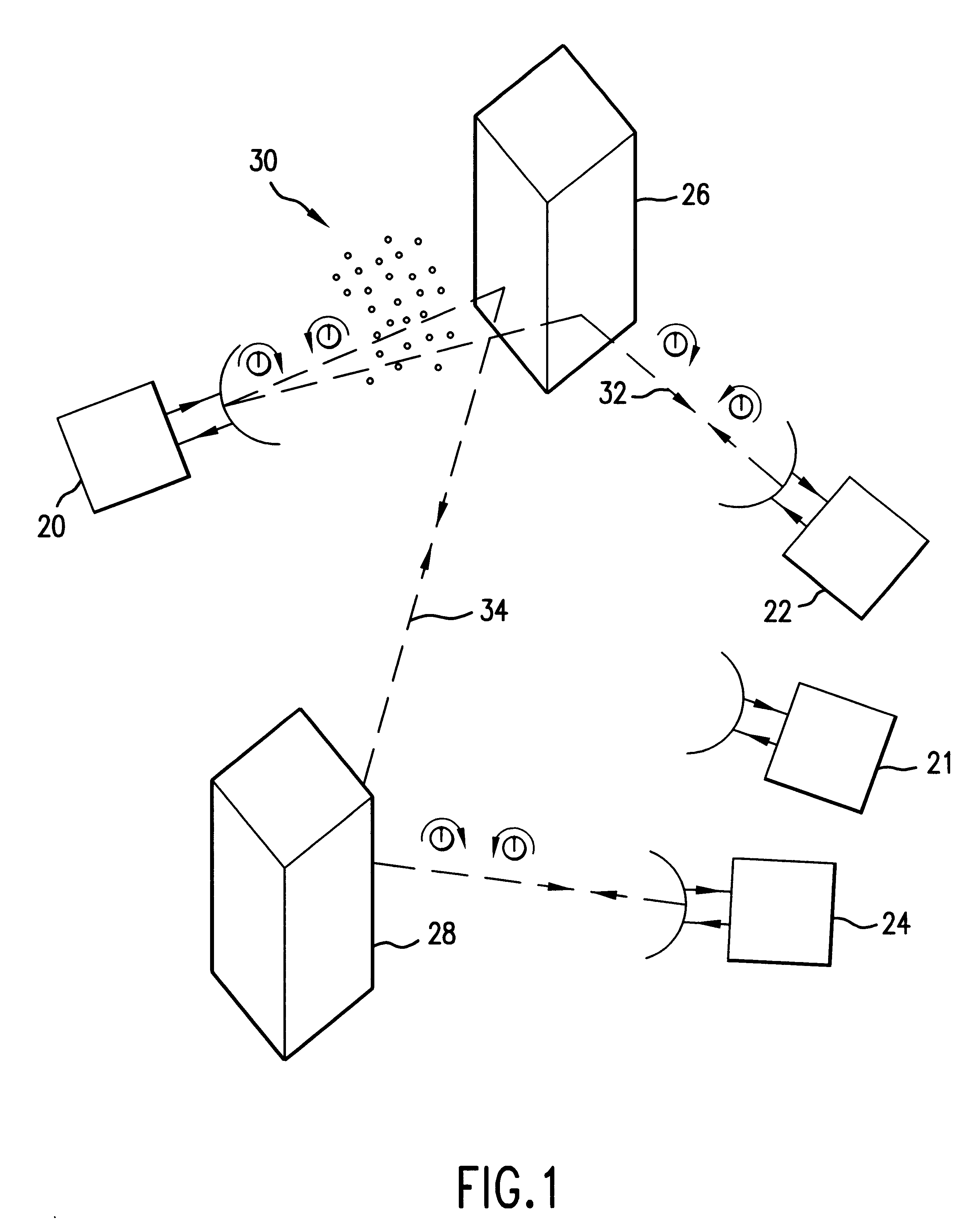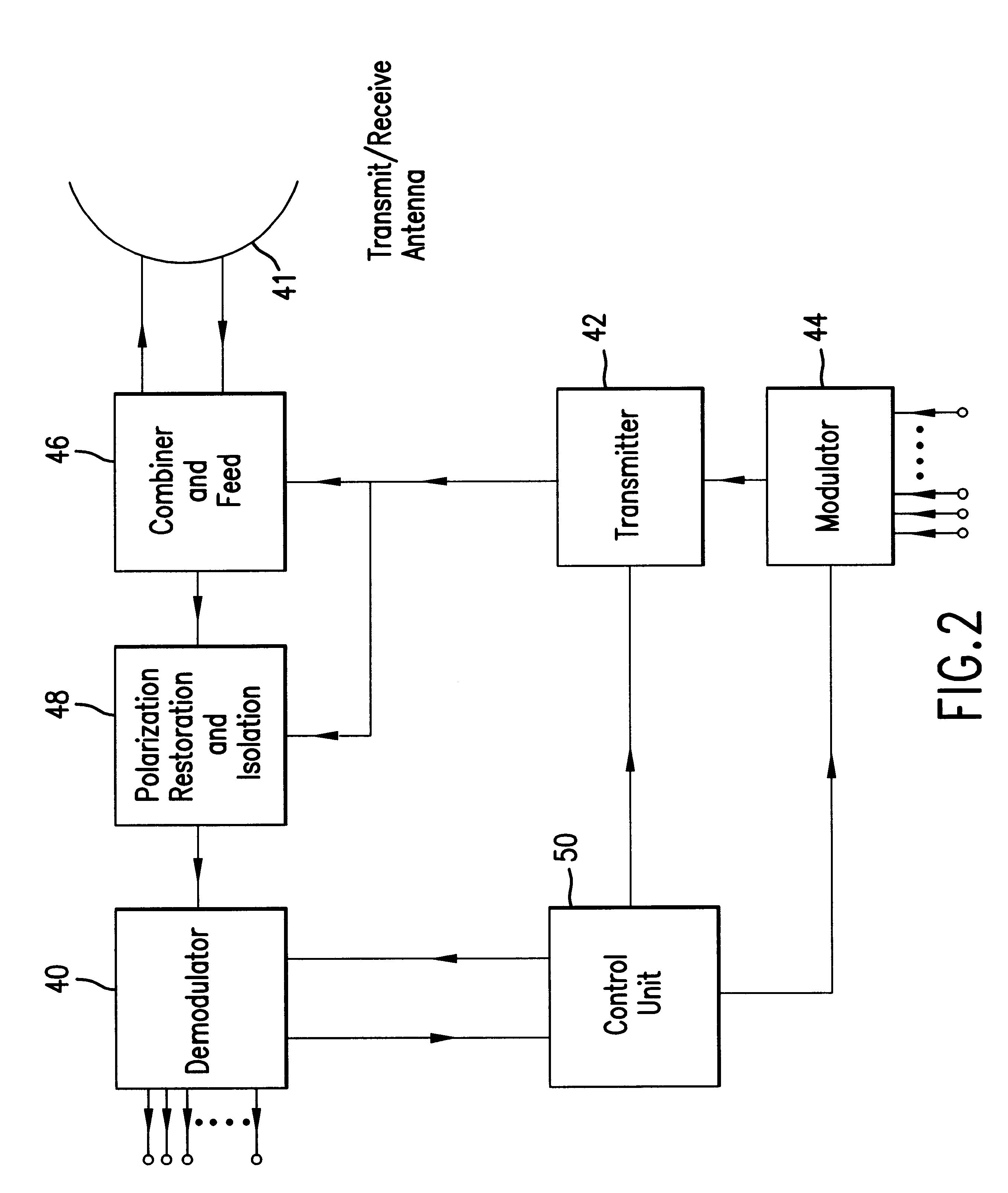Multi-function interactive communications system with circularly/elliptically polarized signal transmission and reception
a communication system and interactive technology, applied in the field of electromagnetic wave communication methods and apparatuses, can solve the problems of elliptical polarization, less effective signal isolation by orthogonal polarization, and common problem of precipitation polarization cross-talk,
- Summary
- Abstract
- Description
- Claims
- Application Information
AI Technical Summary
Benefits of technology
Problems solved by technology
Method used
Image
Examples
Embodiment Construction
As used throughout the specification and claims, the phrases millimeter waves and millimeter-wave frequencies refer to relatively high frequency electromagnetic radiation, particularly frequencies over about 18 GHz.
An electromagnetic communications system that uses dual polarization for signal transmission can effectively double the capacity of a channel. However, at millimeter-wave frequencies, cross-polarization and fading effects due to precipitation constrain two-way communications that use such polarization diversity. For example, rain, snow, or fog can attenuate and / or depolarize such waves. Further, in an urban environment, buildings, trees, and other obstacles can also attenuate and / or depolarize such millimeter waves. These effects are particularly noticeable when a line-of-sight link is unavailable.
The method and apparatus for communications with electromagnetic waves according to this invention include signal restoration and isolation circuitry that achieve a communicatio...
PUM
 Login to View More
Login to View More Abstract
Description
Claims
Application Information
 Login to View More
Login to View More - R&D
- Intellectual Property
- Life Sciences
- Materials
- Tech Scout
- Unparalleled Data Quality
- Higher Quality Content
- 60% Fewer Hallucinations
Browse by: Latest US Patents, China's latest patents, Technical Efficacy Thesaurus, Application Domain, Technology Topic, Popular Technical Reports.
© 2025 PatSnap. All rights reserved.Legal|Privacy policy|Modern Slavery Act Transparency Statement|Sitemap|About US| Contact US: help@patsnap.com



